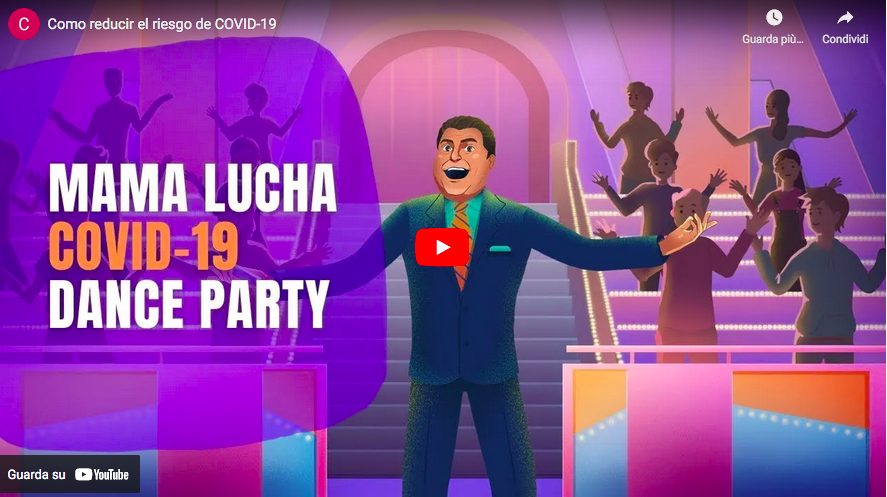
COVIDLatino, a project to disseminate critical, timely, culturally sensitive, entertaining and relatable COVID-19 information for minority communities
by Pisana Ferrari – cApStAn Ambassador to the Global Village
Never before has translation been as important as during the coronavirus pandemic. Understanding relevant medical terms is vital at all times but all the more so during a global health crisis, where compliance to containment measures is critical in order to protect individuals and the community at large. When the pandemic first broke out governments around the world were either not systematically sharing information about the coronavirus in languages other than the official language of the country, or not in a timely manner. As a result, regional and minority language communities and immigrant groups risked being deprived of potentially life-saving information. Gilberto Lopez is an assistant professor at the Arizona State University’s School of Transborder Studies, where he focuses on the health and wellbeing of immigrant, Mexican communities in the U.S. When he was visiting his family in California at the start of the pandemic he realized his community wasn’t getting the information they needed about safety precautions. He got together with other academic institutions, community organizations and artists and, in May 2021, initiated the project COVIDLatino with the aim of providing culturally-tailored and empirically-based COVID-19 information to people of Latin American culture or ethnic identity in the USA. This initiative is all the more important as the Latinx community is 1.9 times more likely to contract the disease, 2.8 times more likely to be hospitalized and 2.3 times more likely to die due to COVID-19 compared to the white and non-Latinx counterparts. At the same time, vaccination rates among this population are low. (1) Preliminary data from the first year of analysis of the project has recently been released by the WHO and is very promising.
The project
COVIDLatino is the fruit of a collective effort by academic institutions, community-based organizations, researchers, advocates, and artists. Lopez reached out to Lalo Alcaraz, a Pulitzer-winning cartoonist, and several local Arizona artists like Andrea Pro and Darrin Armijo-Wardle to produce a series of informative videos. The COVIDLatino videos feature cartoons and illustrations and come in three languages (English, Spanish and Zapoteco). More language versions are in the making (Mixteco and possibly one of the Mayan languages, says Lopez). The choice to develop audio-visual materials was made in order to facilitate people with low literacy levels. Great attention was given to the issue of gender representation and avoidance of all stereotypical roles. The project is innovative because it has drawn on inputs provided by the targeted end-users through surveys and interviews in the initial development phase. End-users were also involved in the development of content. The videos are lively, fun and engaging.
Results
Data from the first year of analysis showed over 3 million views on the website and social media accounts combined. Additionally, 600 Latinx participants are being been followed (August 2020 to July 2022) to assess results. Some preliminary data is now out and it shows that the animations increased knowledge of preventive measures. Data also shows that the cultural content (characters, music, language, etc.) was very well received and that participants found the information relatable and useful.
Check out Gilberto Lopez’s interview for Cronkite News
Addressing cultural sensitivity and suitability issues at cApStAn’s
At cApStAn we assist organizations whose tests and surveys are to be administered in multinational, multiregional and multicultural contexts. The objective is to evaluate the potential cultural divide:
- Is the content suitable for the audience that is being targeted?
- Is the construct portable, is it relevant for the region that is being targeting?
- Is there a risk of being at odds with cultural sensitivity?
The quality assurance (QA) process at cApStAn always involves professional linguists who are members of each target population of the survey or test being developed. We guide them to evaluate the suitability of the content for their local economy, education system, social context, cultural appropriateness, and any other relevant parameters. The end result of this QA process includes guidelines and recommendations for adaptations to avoid any culturally inappropriate or insensitive elements.
Learn more about our cultural suitability review processes at this link
Footnotes
1) Data from US Centers for Disease Control and Prevention, the World Health Organization (WHO) and the US National Institutes of Health
Sources
“COVIDLATINO: Disseminating COVID-19 information tailored to the context and languages of minority communities”, WHO, March 21, 2022
“Gilberto Lopez: Combatting Vaccine Misinformation through Art”, Julia Weis, Salud America, September 10, 2021
Photo credit Screenshot of a Video on the COVIDLatino website